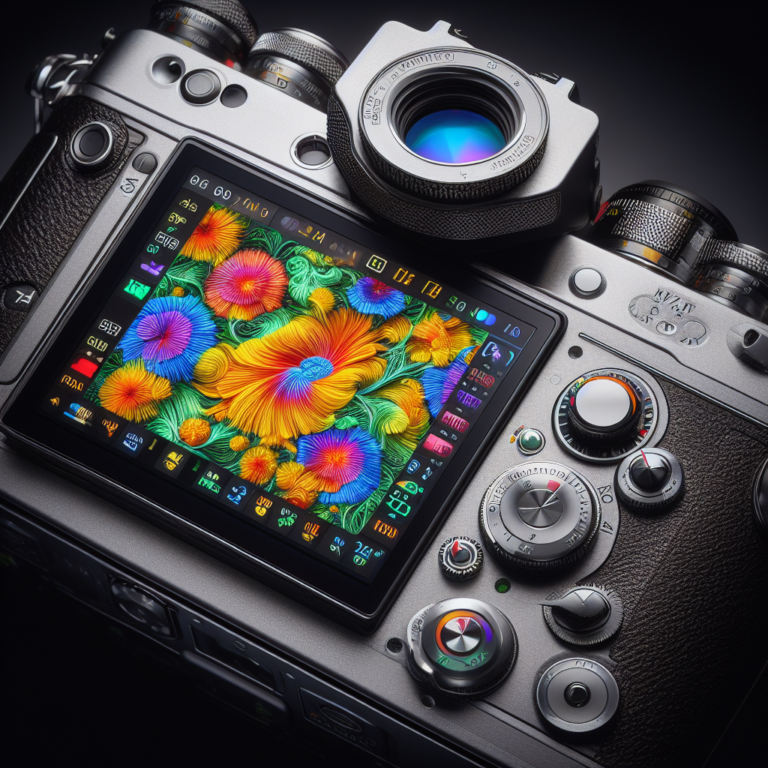How to Clean a Camera Lens Without Lens Cleaner: Essential Tips and Tricks

Are you tired of smudges and fingerprints ruining your perfect shot? It’s frustrating when you don’t have lens cleaner on hand to fix the problem, but don’t worry, there’s a solution.
In this article, we’ll reveal some alternative methods that will help you clean your camera lens without the need for lens cleaner. So, if you’re ready to discover some handy techniques to keep your lens crystal clear, keep on reading.
Key Takeaways
- Use an air blower or compressed air canister with a controlled release to remove loose dust and pollen from the camera lens.
- Use a clean, dry microfiber cloth designed for lens cleaning to gently wipe the lens in a circular motion for basic dust removal.
- For smudges and fingerprints, dampen a clean microfiber cloth with distilled water and gently wipe the lens in a circular motion. Dry immediately with a dry microfiber cloth.
- If distilled water alone doesn’t work, mix one drop of mild dish soap with 100ml of distilled water, dampen a microfiber cloth with the solution, and gently wipe the lens. Dry immediately with a dry microfiber cloth.
Basic Dust Removal:
To remove basic dust from your camera lens, there are two effective methods you can try.
First, use an air blower to gently blow away loose dust and pollen. Hold the blower at a safe distance and blow across the lens surface.
Alternatively, you can use a clean, dry microfiber cloth specifically designed for lens cleaning. Wipe the lens in a circular motion, starting from the center and moving outwards.
Remember to avoid abrasive materials like tissues or paper towels.
Air blower:
Using an air blower is a safe and effective method for removing basic dust from your camera lens. A bulb blower or compressed air canister with a controlled release can be used to blow out loose dust and pollen without risking scratches. Hold the blower at a safe distance and blow outwards across the lens surface.
For stubborn dust, a clean, dry microfiber cloth designed for lens cleaning can be used. Avoid abrasive materials like tissues or paper towels, which can scratch the lens. Gently wipe the lens in a circular motion, starting from the center and moving outwards.
While an air blower and microfiber cloth can help with basic dust removal, for smudges and fingerprints, dampening a clean microfiber cloth with a few drops of distilled water can be effective. Remember to use a very light touch and avoid dripping water onto the lens or camera body.
Microfiber cloth:
A clean, dry microfiber cloth designed for lens cleaning is an effective tool for removing basic dust from your camera lens. Here are some advantages, alternatives, and best practices for using a microfiber cloth for dust removal:
Advantages:
- Safe and gentle: Microfiber cloths are soft and won’t scratch the lens surface.
- Convenient: Microfiber cloths are easily accessible and can be used multiple times.
- Effective: The fibers in the cloth attract and trap dust particles, leaving your lens clean.
Disadvantages:
- May not remove stubborn dirt or smudges: For more stubborn dust or smudges, additional cleaning methods may be necessary.
Alternatives:
- Air blower: Use an air blower to remove loose dust before using the microfiber cloth.
- Distilled water: Dampen the microfiber cloth with a few drops of distilled water for smudges and fingerprints.
Techniques:
- Use a circular motion: Gently wipe the lens in a circular motion, starting from the center and moving outwards.
- Dry thoroughly: Ensure the lens is completely dry before using your camera.
For Smudges and Fingerprints:
To remove smudges and fingerprints from your camera lens, you have a couple of options.
The first is to use distilled water on a clean microfiber cloth, applying a light touch and wiping in a circular motion.
If the smudges persist, you can try a weak solution of distilled water and dish soap. Dampen the cloth with the solution, wring out excess moisture, and gently wipe the lens before drying it immediately.
Distilled water:
For effectively removing smudges and fingerprints from your camera lens, distilled water can be a safe and gentle option. Here are some essential points to keep in mind when using distilled water for lens cleaning:
-
Cleaning technique: To properly dampen the microfiber cloth with distilled water, lightly moisten the cloth with a few drops of water. Make sure the cloth isn’t dripping wet to avoid water seeping into the lens or camera body.
-
Distilled water alternatives: While distilled water is a reliable choice, if it’s not available, you can use lens cleaning solutions specifically designed for camera lenses. These solutions are formulated to be safe and effective.
-
Distilled water storage: To maintain its purity, distilled water should be stored in a tightly sealed container away from direct sunlight and extreme temperatures. This helps prevent any contamination that could affect its cleaning properties.
-
Precautions with distilled water: When using distilled water for lens cleaning, ensure that you handle it with clean hands and avoid touching the spout or pouring directly from the bottle to prevent any potential contamination.
-
Distilled water and lens coatings: Distilled water is gentle and unlikely to damage lens coatings. However, it’s still important to use a light touch when cleaning to minimize the risk of any potential damage.
Distilled water and cleaning solution:
When dealing with smudges and fingerprints on your camera lens, you can consider using a combination of distilled water and a cleaning solution. Distilled water is a safe and effective option for removing these types of stains from your lens. It is important to note that distilled water should be used sparingly and with caution, as excessive moisture can damage the lens. To enhance the effectiveness of the distilled water, you can mix in a small amount of mild dish soap. This can help break down oils and stubborn smudges. However, it is crucial to ensure that the cleaning solution is very weak and thoroughly rinsed off to prevent any residue from damaging the lens. Here is a table summarizing the pros and cons of using distilled water and cleaning solution:
| Pros | Cons |
|---|---|
| Safe and effective for removing smudges and fingerprints | Excessive moisture can damage the lens |
| Can be enhanced with mild dish soap for better cleaning | Cleaning solution needs to be weak and rinsed off thoroughly |
| Readily available and affordable | Professional cleaning may be needed for heavily soiled lenses |
Remember to be gentle when cleaning and always dry the lens thoroughly before using your camera to prevent dust and fungus growth.
Important Cautions:
When cleaning your camera lens without lens cleaner, there are important cautions to keep in mind.
First, never use harsh chemicals or cleaners such as alcohol or window cleaners, as they can damage the lens coating.
Second, be gentle when cleaning to avoid scratching the lens, applying minimal pressure.
Lastly, ensure the lens is completely dry before using your camera to prevent moisture from attracting dust or causing fungus growth.
If the lens is heavily soiled or has stubborn marks, it’s best to seek professional cleaning from a camera shop.
Never use harsh chemicals or cleaners:
Using harsh chemicals or cleaners on your camera lens can cause damage to the lens coating and should be avoided at all costs. Instead, opt for safe alternatives and gentle methods to ensure effective lens cleaning without risking any damage.
Here are some recommended lens cleaning techniques to avoid using harsh chemicals or cleaners:
-
Air blower: Use a gentle air blower to remove loose dust and pollen from your lens. Hold the blower at a safe distance and blow outwards across the lens surface.
-
Microfiber cloth: For stubborn dust, use a clean, dry microfiber cloth designed for lens cleaning. Gently wipe the lens in a circular motion, starting from the center and moving outwards.
-
Distilled water: Dampen a clean microfiber cloth with a few drops of distilled water to clean smudges and fingerprints. Wipe the lens gently in a circular motion, then dry it immediately with a dry microfiber cloth.
Be gentle:
To ensure the safety of your camera lens during cleaning, it is crucial to handle it with utmost care and gentleness. Applying too much pressure can result in scratches and damage to the lens coating. Remember, a gentle touch is key. Using gentle techniques and proper maintenance will help preserve the quality of your lens and avoid costly repairs. To assist you in understanding the importance of being gentle while cleaning your camera lens, here are some key points to keep in mind:
| Importance of Being Gentle | Reasons |
|---|---|
| Avoiding Scratches | Prevents damage to the lens coating and maintains image quality. |
| Lens Cleanliness | Ensures clear and sharp images by removing dust, smudges, and fingerprints. |
| Proper Maintenance | Extends the lifespan of your camera lens and preserves its value. |
| Lens Cleaning Tools | Use soft and non-abrasive materials like microfiber cloths to minimize the risk of scratches. |
Dry thoroughly:
To ensure the safety of your camera lens and prevent damage, it’s crucial to fully dry the lens after cleaning. Here are some important cautions to keep in mind for safe drying methods:
-
Preventing scratches:
-
Avoid using abrasive materials like tissues or paper towels, as they can scratch the lens.
-
Use a clean, dry microfiber cloth specifically designed for lens cleaning.
-
Avoiding moisture:
-
After cleaning with distilled water or a cleaning solution, dry the lens immediately with a dry microfiber cloth.
-
Ensure there’s no excess moisture left on the lens or camera body.
-
Benefits of professional cleaning:
-
If the lens is heavily soiled or has stubborn marks, it’s best to seek professional cleaning from a camera shop.
-
Professional cleaning ensures thorough and safe removal of dirt and grime without causing any damage to the lens.
Consider professional cleaning:
Consider seeking professional cleaning for your camera lens if it’s heavily soiled or has stubborn marks. Camera shops specializing in lens cleaning have the expertise and equipment to safely and effectively remove dirt, smudges, and other contaminants without risking damage to the lens. When looking for a reputable camera shop, consider checking online reviews, asking for recommendations from fellow photographers, or contacting the manufacturer for authorized service centers.
While there are alternative methods for cleaning your lens, professional cleaning offers several advantages. DIY lens cleaning kits are also available, but they may not be as thorough or reliable as professional cleaning. Common signs that indicate the need for professional cleaning include visible smudges, blurry images, or difficulty focusing.





